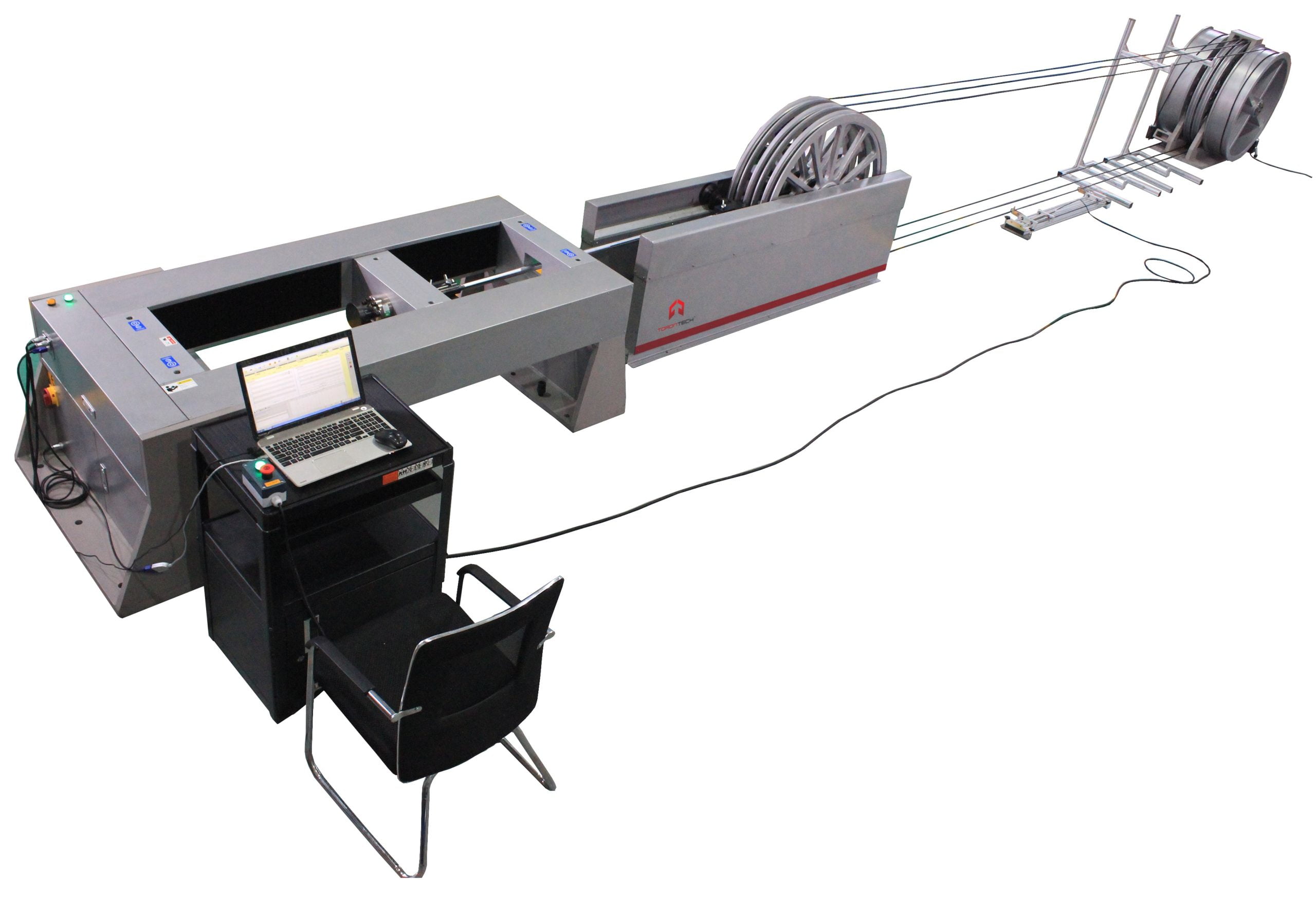Best practices for maximizing the performance of fibre testing equipment
Wiki Article
All You Need to Learn About Robotic Vision and Its Applications in Advanced Optical Measurement Solutions
Robotic vision stands for a considerable improvement in the crossway of computer vision, fabricated intelligence, and machine discovering. This innovation improves the accuracy of optical dimension systems, making it possible for real-time information evaluation and boosted quality control. Its impact spans multiple industries, from producing to medical care. The progressing landscape of robot vision increases concerns concerning future capabilities and applications. What advancements lie ahead in this transformative field?Understanding Robotic Vision: Key Concepts and Technologies
Robotic vision includes the modern technologies and approaches that allow makers to translate and understand visual information from their environment. This field incorporates elements of computer vision, expert system, and artificial intelligence to promote automatic decision-making based on aesthetic data. Key concepts consist of picture processing, which entails the enhancement and analysis of photos to draw out purposeful features, and object recognition, which allows devices to determine and categorize things within a scene.
The Assimilation of Robotic Vision With Optical Dimension Equipments
As industries significantly require precision and effectiveness, the integration of robotic vision with optical measurement systems has become a transformative strategy. This harmony permits robots to view and interpret their environments, improving the capacity of optical measurement systems to examine and assess items with unequaled precision. By outfitting optical sensors with sophisticated imaging modern technologies, robotic vision allows real-time information collection and processing, helping with immediate modifications to dimension criteria.The combination empowers automated systems to discover variations in dimensions, surface quality, and positioning, which are essential in high quality control processes. Enhanced algorithms, such as artificial intelligence, additional enhance this assimilation by enhancing the systems' capacity to adjust to various settings and scenarios. Subsequently, the integration not only enhances dimension processes yet also minimizes mistakes, making certain that items fulfill stringent sector standards, thereby strengthening the duty of robot vision in the future of optical measurement systems.
Applications of Robotic Vision in Manufacturing
In contemporary production settings, the usage of vision systems has changed production processes by allowing devices to execute jobs with remarkable precision and rate. Robotic vision systems are increasingly employed for quality assurance, where they check products for flaws and warranty adherence to requirements. These systems utilize cams and progressed formulas to assess items in real-time, considerably decreasing the danger of human error.Furthermore, robotic vision helps with automation in production line, allowing robotics to his response accurately determine components and construct them with marginal downtime. This technology also enhances inventory management, as vision systems can keep an eye on supply levels and find discrepancies, assuring a seamless supply chain.
Moreover, robot vision aids in the implementation of wise manufacturing facilities, where information from vision systems can be incorporated with other innovations to maximize process. On the whole, the applications of robotic vision in making demonstrate its crucial role in boosting performance, quality, and productivity throughout different sectors
Robotic Vision in Medical Care: Reinventing Client Care

In recovery, robot vision help in monitoring client development and customizing therapy sessions to specific demands. It sustains physician by automating tasks such as data collection and person monitoring, permitting for more time to concentrate on straight person interaction. Additionally, robotic vision enhances telemedicine by making it possible for remote diagnosis and virtual assessments, bridging the gap between people and medical care carriers. On the whole, the application of robot vision in medical care is reinventing individual care, bring about enhanced results, effectiveness, and client complete satisfaction.
Future Trends and Developments in Robotic Vision Innovation
The fast advancement of robot vision modern technology guarantees to further boost its applications across numerous sectors, consisting of medical care. Future patterns show a considerable shift in the direction of integrating expert system and machine discovering, enabling systems to pick up from huge datasets and improve accuracy in time. Boosted sensor modern technologies and deep knowing algorithms are expected to refine object recognition capabilities, permitting robots to translate intricate environments better.
In addition, the integration of increased truth (AR) with robot vision will likely revolutionize exactly how robotics aid in procedures and diagnostics. This harmony will help with real-time data visualization, enhancing decision-making processes. Furthermore, miniaturization of parts will lead to even more small and flexible robot vision systems suitable for a range of jobs. As these improvements unravel, industries will witness raised automation and performance, solidifying robotic vision as a foundation of cutting-edge technological services.
Regularly Asked Inquiries
What Are the Main Parts of a Robotic Vision System?
The main components of a robot vision system consist of video cameras for photo capture, cpus for information evaluation, formulas for interpretation, and actuators for motion. With each next other, these components enable robotics to view and engage with their setting effectively.How Does Robotic Vision Improve Precision in Measurements?
Robotic vision boosts dimension accuracy by using innovative imaging technologies, enabling exact things detection and spatial evaluation. This ability minimizes human error, enhances repeatability, and enables real-time changes, inevitably boosting general measurement reliability and effectiveness.What Industries Benefit Many From Robotic Vision Innovation?
Numerous sectors benefit substantially from robotic vision innovation, consisting of manufacturing, medical care, agriculture, and logistics. These markets utilize boosted accuracy, effectiveness, and automation, resulting in boosted efficiency and decreased operational prices in their respective procedures.Can Robotic Vision Equipments Operate In Low-Light Issues?
Robotic vision systems can indeed operate in low-light problems, making use of advanced sensing units and algorithms to boost photo quality. This ability permits them to do successfully in different atmospheres, including commercial and monitoring applications, even with marginal lighting.What Are the Prices Connected With Carrying Out Robotic Vision?
The expenses related to carrying out robot vision differ considerably, influenced by components such as cameras, software application, and combination. Extra expenses consist of upkeep, training employees, and possible upgrades to existing systems, which can build up gradually.Report this wiki page